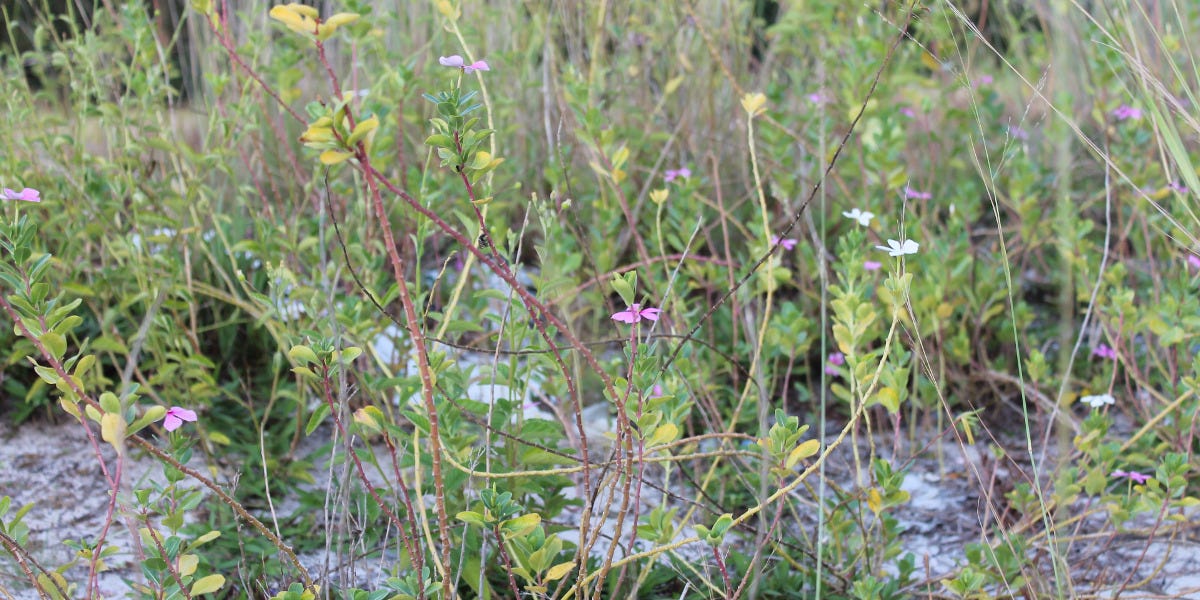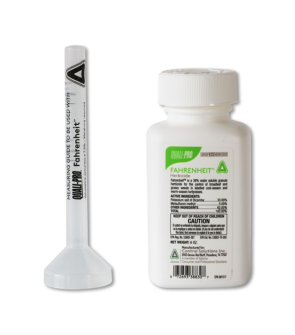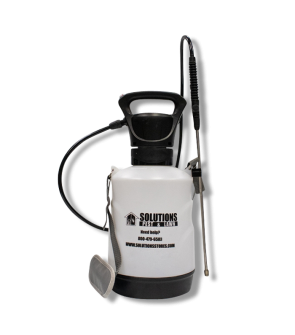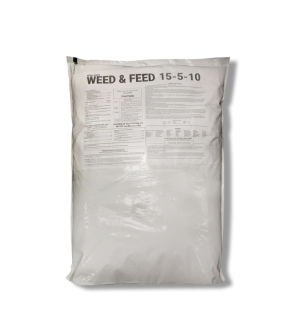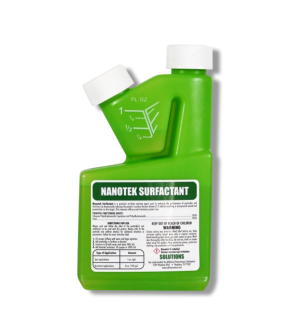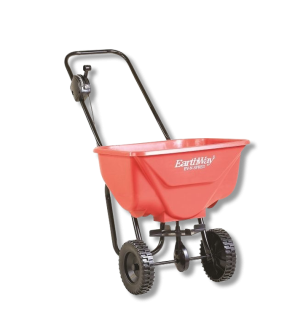Gain access to personalized product screening, the best pricing, rewards, and more!
Most Effective Products
Slender Aster Control: How to Get Rid of Slender Aster
This page is a general slender aster control guide. Using the products and methods suggested in this DIY article will help you get control of slender aster. Follow this DIY guide and use the recommended products and we guarantee 100% control of slender aster.
Have you ever seen a clump or cluster of weeds that appear to look like daisies in your yard? There's a good chance that mass of weeds is slender aster, also known as eurybia compacta.
This fast-growing plant is commonly spotted in the eastern half of the United States from New Jersey to Georgia. Even though some homeowners may consider this foliage desirable due to its appearance and benefit to local pollinators some can consider this a weed.
As a weed, it can compete and interfere with turf and other nearby foliage bringing about complete death. The longer it develops the more harder it is to remove since the plant will become more woody over time.
To reduce the economic loss and death of your lawn and plants, we recommend controlling slender aster as soon as possible. Slender aster populations can be controlled and eliminated with the tips and products suggested in this professional article.
Identification

Before proceeding with a treatment program, you will need to determine if the weed on your lawn is slender aster. Misidentification can lead you to using the wrong treatment method, which can be a waste of time and money. Refer to these following characteristics to help you identify slender aster.
- Slender aster can be an annual or perennial broadleaf weed that has creeping rhizomes, and horizontal stolons, and can grow between 1-6 feet tall.
- The leaves are alternatively arranged along the stem, and linear to narrowly elliptic shaped.
- Flowers are daisy-like in appearance that range from lavender, blue, white, violet, or pink. These flowers will appear at the end of the stems in clusters.
- Stems can be smooth or hairy and slender. As the slender aster ages the stems can become more woody.
Use the description and image above to help you identify slender aster on your lawn. If you are unsure whether the plant is slender aster, then contact us with a photo of the weed and we will properly identify the foliage and suggest the appropriate herbicide recommendations.
Inspection
After you have confirmed that the infestation on your property is slender aster, you can proceed with inspection. During this phase, you will locate areas where slender aster is thriving and observe the conditions helping that are allowing it to survive. This information will help you in knowing where to focus your herbicide applications.
Where to Inspect
Slender aster grows best in sites with full sun or partial shade and well-drained, moist, loamy soil.
You are most likely to find this weed growing in lawns, landscapes, wooded areas, along roadsides, ditches, and other areas with thin turf.
What to Look For
Depending on the species, slender aster can be seen from January to December or September to October.
Often, they are most easily noticed as tall, thin plants with alternative leaves, and small daisy-like flowers.
Treatment
When beginning any weed control application, you will need to wear the appropriate personal protective equipment (PPE) that protect your face, mouth, eyes, hands, feet, and skin.
We recommend using a selective, post-emergent herbicide to control slender aster in your property. Best to make post-emergent applications when the weed is actively growing.
Step 1: Mix and Apply Herbicides

Apply Fahrenheit Herbicide as a spot treatment at the rate of 0.2 oz. of product per 1 gallon of water per 1,000 sq. ft. of turf.
To get rid of slender aster in cool-seasoned turf, use 2,4-D Amine Selective Post-Emergent Herbicide. This product is an emulsifiable concentrate herbicide designed to eliminate broadleaf weeds and brush in lawns, pastures, and more.
To use 2,4-D Amine Selective Post-Emergent Herbicide as a spot treatment, apply 1/4 pint of product in 3 gallons of water.
These products will need to be mixed with water in a handheld or backpack sprayer.
We recommend using a non-ionic surfactant to enhance the performance of your herbicide. Nanotek Surfactant is a non-ionic surfactant that greatly enhances the penetration and coverage of herbicide and insecticide material.
Just add 1 oz. of Nanotek Surfactant per 1 gallon of spray solution.
You will need to mix these products with water. In order to mix your herbicides you will need to first fill your selected sprayer with half the amount of water.
Add the proper amount of herbicide and Nanotek Surfactant, then pour in the remaining half of the water. Close the sprayer tank lid and shake until the solution is well-mixed.
Spot-treat any weed you find during your inspection. Use a fan or cone spray pattern to ensure the leaves are fully coated, and spray the weed to the point of wetting but not runoff.
Step 2: Reapply if needed

If you are still finding slender aster in your property, you can perform a second application.
Repeat applications with Fahrenheit Herbicide when 4-6 weeks have passed from the first application.
Reapplication with 2,4-D Amine Selective Post-Emergent Herbicide ranges from 21 to 30 days.
Prevention

- A long-term solution to preventing slender asters is to keep up with regular lawn care. If the weed is caught early enough (before it shows flowers and begins seeding), you can simply pull it out by hand or with a gardening hoe.
- Decrease stagnant water in your yard by adjusting irrigation practices. Water with no more than 1 inch of irrigation, once per week, preferably in the early morning.
- Sites with tall vegetation are ideal for slender aster because it is easier for this weed to overtake. Healthy, well-maintained turf makes it harder for slender aster to become established so we suggest mowing and seasonal fertilizations. Mow your turf to the appropriate height. Typically, a good rule to follow is to remove no more than 1/3 of the grass blades when mowing.
- We suggest using a slow-release granule fertilizer to help maintain your turf's health. A fertilizer we like to suggest is the Solutions 15-5-10 Weed & Feed Fertilizer with Trimec, which promotes healthy turf growth and controls emerged weeds at the same time. Mow lawn to normal height 1 to 2 days before application. Water lawn thoroughly at least 1 day before application. If the grass is not moist at the time of application, sprinkle lightly with water to hold the material. Apply 3.2 to 4.0 pounds of Solutions 15-5-10 Weed & Feed Fertilizer with Trimec per 1,000 sq. ft. of treatment area. This product may be applied with a push or broadcast spreader. Evenly distribute the granules across the treatment area. Once this is done you will need to water the treated area thoroughly with water at least 1 to 2 days after application.
Key Takeaways
What is Slender Aster?
- Slender aster to some individuals is considered a desired herbaceous perennial or an invasive annual or broadleaf weed with a distinct spreading habit.
How to Get Rid of Slender Aster
- To get rid of slender aster, we recommend using Fahrenheit Herbicide if you have warm-seasoned turf or 2,4-D Amine Selective Post-Emergent Herbicide for cool-seasoned turf.
Preventing Slender Aster Reinfestation
- To prevent slender, you will take on a combination of lawn cultural techniques such as mowing, hand-pulling, hoeing or tillering, and seasonal applications with fertilizers.






